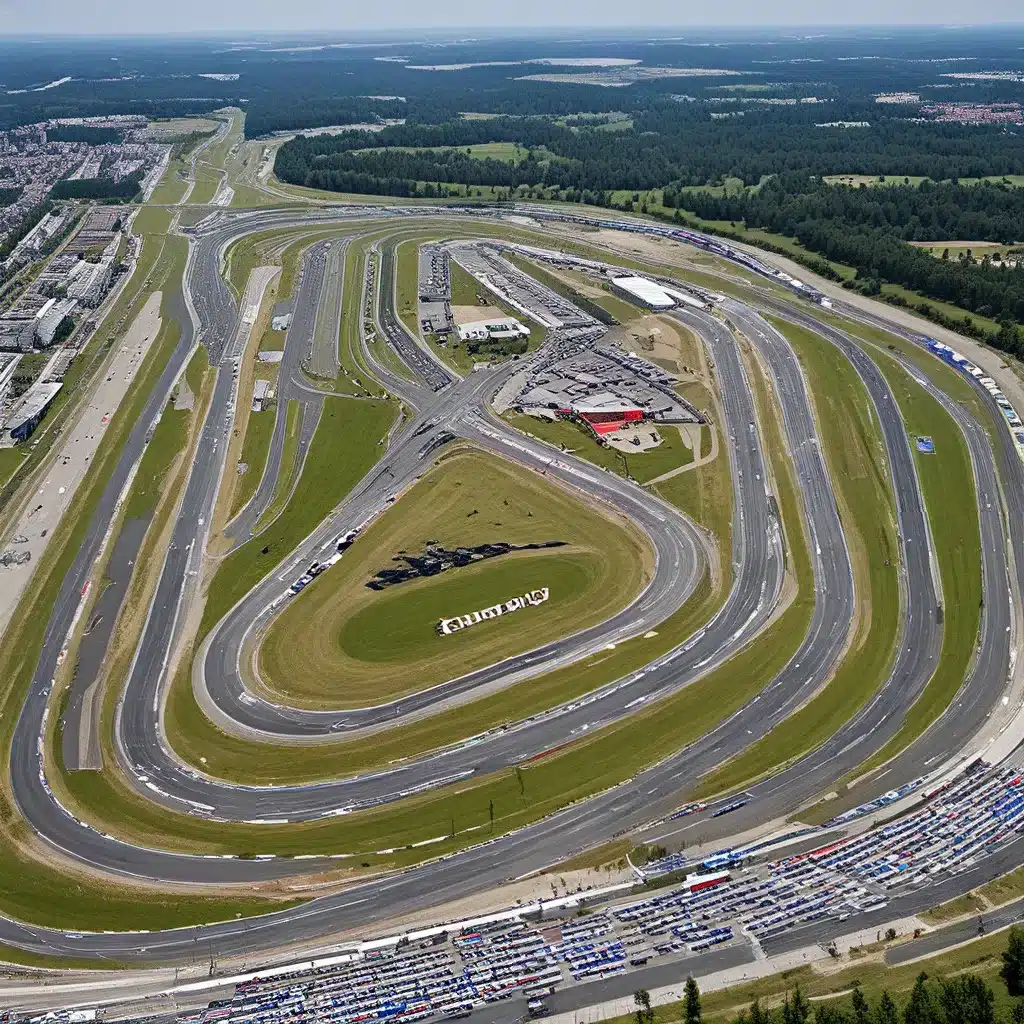
The Storied History of Hockenheimring
The Hockenheimring is a legendary racing circuit located in the small town of Hockenheim, Germany. Nestled in the heart of the Baden-Württemberg region, this iconic track has been a fixture in the world of motorsports for decades, hosting some of the most thrilling races in the sport’s history.
The circuit’s roots can be traced back to the 1930s when a series of makeshift roads were converted into a racing venue. Over the years, the Hockenheimring has undergone numerous transformations, evolving from a simple country road circuit to a state-of-the-art facility that has captured the imagination of racing enthusiasts around the globe.
One of the most notable moments in the Hockenheimring’s history was the tragic loss of Jim Clark, a legendary Formula One driver. In 1968, Clark was killed in a Formula 2 race at the circuit, a devastating event that shook the motorsports community. Despite this tragedy, the Hockenheimring has continued to honor Clark’s memory and has become a symbol of resilience and perseverance.
The Changing Face of Hockenheimring
The Hockenheimring’s appearance has undergone significant changes over the years, reflecting the evolving demands of modern motorsports. Originally, the circuit featured a long, winding course that stretched through the dense forests surrounding the town, providing drivers with a challenging and thrilling experience.
However, in the late 1990s, the circuit underwent a major overhaul, with the introduction of a new, more compact layout. This decision was met with mixed reactions, as some fans lamented the loss of the classic Hockenheimring experience, while others welcomed the changes, citing the need for greater safety and spectator accessibility.
Despite these changes, the Hockenheimring has remained a beloved destination for racing enthusiasts, who come from around the world to witness the adrenaline-fueled action that takes place on its winding tarmac.
The Jim Clark Memorial: A Lasting Legacy
The tragic death of Jim Clark at the Hockenheimring 35 years ago has left an indelible mark on the circuit’s history. The Jim Clark Memorial, located within the circuit’s grounds, serves as a poignant reminder of the sacrifices made by the sport’s most dedicated competitors.
Unfortunately, the memorial’s location remains largely unknown, with many visitors unaware of its significance. This fact has been a source of concern for those who believe that the Hockenheimring-Ring GmbH, the entity responsible for the circuit’s management, should take a more active role in preserving and promoting the memory of this motorsports legend.
There is a growing movement among racing enthusiasts and historians to ensure that the Jim Clark Memorial is given the attention and respect it deserves. This effort is not just about honoring the past, but also about ensuring that the Hockenheimring’s rich heritage is passed down to future generations of motorsports fans.
The Hockenheimring Today: A Blend of Past and Present
Despite the changes that have reshaped the Hockenheimring over the years, the circuit remains a vital part of the international motorsports landscape. The German Grand Prix continues to be a highlight of the Formula One calendar, drawing legions of devoted fans to witness the spectacle of high-speed racing.
While the excitement of the Grands Prix is undeniable, the Hockenheimring also serves as a venue for a diverse range of events, from music festivals to corporate functions. This versatility has helped the circuit maintain its relevance and importance in the ever-evolving world of sports and entertainment.
However, as the Hockenheimring looks to the future, there are ongoing discussions about the circuit’s long-term sustainability. Some experts believe that the circuit may need to undergo further renovations or even a complete overhaul to remain competitive in the rapidly changing landscape of motorsports.
Conclusion: Preserving the Legacy of Hockenheimring
The Hockenheimring is a true icon of German motorsports, a testament to the passion and dedication that have shaped the sport’s history. While the circuit has evolved over the decades, its core essence remains intact, capturing the imagination of racing enthusiasts from around the world.
As the Hockenheimring continues to push forward, it is crucial that the lessons of the past are not forgotten. The memory of Jim Clark and the countless other drivers who have left their mark on this hallowed ground must be honored and preserved, ensuring that the Hockenheimring remains a beacon of hope and inspiration for generations to come.
Ultimately, the Hockenheimring’s story is one of resilience, adaptability, and the enduring power of the human spirit. By embracing its rich history and looking towards a more sustainable future, this iconic racing circuit can continue to captivate and inspire all who step onto its hallowed tarmac.
If you’re interested in exploring more of the world’s historic stadiums, be sure to check out Old Stadium Journey, a comprehensive resource that delves into the stories and secrets of some of the most fascinating sporting venues on the planet.
